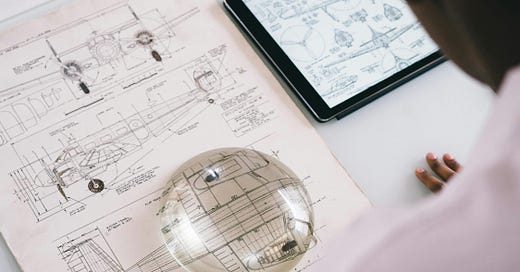Happy Friday.
Let’s get deep, like really deep, into the world of component-composite analysis in ABA.
I want to go beyond the technical breakdown of skill-building—I want to talk about component-composite analysis as a philosophy, a way of seeing the world—not simply clinical work—that changes everything. If you’ve been following my work, you know that dissecting a skill down to its barest essentials is crucial. You know that teaching those bare essentials is crucial. You know that mastering that sub-skill is crucial. But, every skill we teach doesn’t just exist in isolation. It’s part of something way bigger. And if you don’t get this, you’re missing out on what might be the most powerful perspective in our field—and maybe even life.
A scenario: you’re teaching a child to sit on a toilet for 30 seconds and void. Simple enough, right? Well, maybe not. It’s a skill, yes, but it’s also part of a larger, composite skill. One that points us toward independence. Independence, in turn, feeds into their quality of life, which is something fundamental to our work. When you teach toileting, you’re not just teaching them to relieve themselves in a socially acceptable way; you’re opening a door toward greater autonomy, greater self-confidence, a better and safer life. That’s why this matters.
Every skill is both a component and a composite. It has parts that build up to it, and it itself is a building block of something greater. Think about that. Everything you teach has layers. Toileting isn’t just toileting; it’s an entry point to personal dignity, safety, and independence. The more you practice breaking down and building up skills, the more you’ll start seeing this universal structure in everything around you. Because here’s the truth: the world operates in layers, in fractals, in components and composites, and you can see it everywhere if you look closely.
Take a car as an example.
A car is made of parts—an engine, wheels, seats—all coming together to create something useful. But a car isn’t just a car; it’s a component of transportation, which feeds into the composite of mobility. Mobility, in turn, allows one to move freely and quickly between geographic locations with ease thus feeding into the composite of improved quality of life, which is an essential part of human fulfillment. Each level is connected, each part essential to the whole. When you start looking at skills this way, suddenly teaching becomes less about boxes to check and more about a flow—a chain leading to something bigger, more meaningful.
Again, this paradigm is not just for ABA. It’s a lens on reality. Life exists in this hierarchy. You look at every little thing, and suddenly you see the entire pattern of existence in it. You see how something as simple as teaching a child to sit calmly can ripple into larger goals, like social inclusion, communication, and independence. You also see how water—broken into it's tiny molecules—can be scaled upward into a life saving liquid or an unforgettable day at the beach. These aren’t isolated phenomenon; they’re part of an interconnected system that, if you zoom out far enough, is ultimately—hopefully—about goodness. Teaching toileting isn’t just about toileting. It’s about dignity. It’s about quality of life.
This is where science and philosophy collide. Science loves to break things down, to reduce them to their parts—almost robotically. But the power of component-composite analysis lies in looking up the chain, as well as down. Yes, dissect the skill into its core parts, but then step back and ask: why am I teaching this? Where does it fit in the grand scheme of things? Does it serve a purpose? If you can connect it all the way up to improving quality of life, you know you’re teaching the right things.
So here’s my challenge for you: use component-composite analysis on everything, not just the skills you’re teaching. Question each piece and its place in the whole. Understand both the ingredients and the impact. The world is built on components and composites—this pattern of reality is everywhere if you’re willing to look. And once you see it, it changes you. It makes you a better behavior analyst, yes, but also a more thoughtful, intentional human being.
Look for the connections.
Embrace the big picture.
See you next week :)
Martin Myers is a BCBA with a passion for helping improve the field of ABA. He is the creator of BxMastery, with over 4,000 goal ideas, sequenced, to inspire your programming. With 10+ years of experience in the field, he’s dedicated to empowering others and fostering positive change through effective leadership and communication. Connect with Martin on LinkedIn, Facebook, Instagram, and TikTok for more insights and updates.






I've learned the world is fractal - it's all repetition and scale. Why do we see the car as unity and not as the multiplicity of its parts? Our young autistic students might be more inclined toward multiplicity and exploring all the details and facets before arriving unity. Reality scales both higher and lower, almost infinitely.